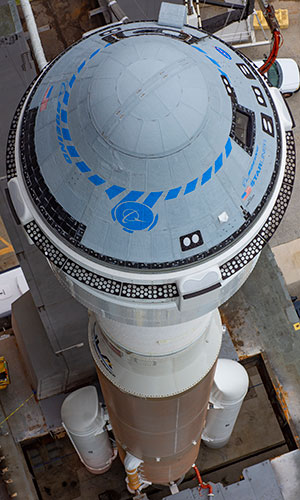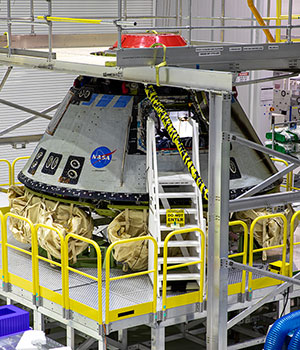April 6, 2020 — Boeing will fly a second uncrewed flight test of its new Starliner spacecraft after its first mission failed to reach the International Space Station late last year.
The aerospace company announced the re-flight on Monday (April 6), four months after its first CST-100 Starliner Orbital Flight Test (OFT) was cut short by software problems.
"We have chosen to refly our Orbital Flight Test to demonstrate the quality of the Starliner system," The Boeing Company stated in a release. "Flying another uncrewed flight will allow us to complete all flight test objectives and evaluate the performance of the second Starliner vehicle at no cost to the taxpayer. We will then proceed to the tremendous responsibility and privilege of flying astronauts to the International Space Station."
Boeing launched its first Starliner OFT in December 2019 to demonstrate that the capsule was ready to begin carrying astronauts to and from the space station under a contract with NASA's commercial crew program. The launch, on a United Launch Alliance (ULA) Atlas V rocket from Cape Canaveral Air Force Station in Florida, proceeded to plan, up until the uncrewed Starliner was released into orbit.
A coding error involving the Starliner's mission elapsed timer incorrectly polled time from the Atlas V booster nearly 11 hours prior to launch, leading the capsule to think that it was at a different point in the mission following its separation from the rocket. Subsequent thruster firings to correct for the perceived problem left the capsule in the wrong orbit and without the fuel reserves needed to dock with the space station and then return to Earth as planned.
Boeing's mission operations team instead directed the Starliner to carry out some of its planned demonstration maneuvers in the lower orbit before reentering the atmosphere. Another coding issue, controlling how the Starliner's service module would separate from the capsule, was found and corrected before the spacecraft descended under parachutes to a touchdown at the White Sands Space Harbor in New Mexico.
Following the curtailed mission, a joint NASA and Boeing review team identified 61 corrective and preventative actions to address the two software problems, as well as an intermittent communications issue that delayed contact with the spacecraft.
Boeing accepted the review's recommendations, including re-verifying the flight software. In addition, the company set aside $410 million to provision for another uncrewed test flight.
"The Boeing Company is honored to be a provider for the Commercial Crew mission. We are committed to the safety of the men and women who design, build and ultimately will fly on the Starliner just as we have on every crewed mission to space," the company said on Monday.
Boeing is working with NASA to determine a schedule for the second OFT, which will be flown using the Starliner (Spacecraft 2) previously assigned to fly the Crew Flight Test (CFT).
"While details are yet to be confirmed, we anticipate flying the mission in the Fall of 2020," a company spokesperson said.
Dates for the follow-on CFT and first post-certification mission (PCM-1) have not yet been determined. Boeing commercial astronaut Chris Ferguson is assigned to fly with NASA astronauts Mike Fincke and Nicole Mann on the CFT, when it is ready to launch. NASA astronauts Sunita Williams and Josh Cassada are slated to fly on PCM-1.
SpaceX, NASA's other commercial crew partner, flew an uncrewed demo of its Crew Dragon spacecraft in March 2019. The company is now preparing to launch Demo-2, its first crewed test flight with NASA astronauts Doug Hurley and Bob Behnken, as soon as mid- to late-May. SpaceX's first operational mission, Crew-1, will follow with NASA astronauts Michael Hopkins, Victor Glover and Shannon Walker, as well as Japan Aerospace Exploration Agency (JAXA) astronaut Soichi Noguchi. |
|

A Boeing Starliner sits atop a United Launch Alliance Atlas V rocket prior to the launch of the spacecraft's first orbital flight test (OFT). A second uncrewed OFT will be flown to achieve the objectives of the first, including reaching the space station. (United Launch Alliance)

Boeing's Starliner spacecraft seen after completing its first Orbital Flight Test (OFT) in December 2019 and being returned to the Commercial Crew and Cargo Processing Facility at the Kennedy Space Center in Florida. (NASA/Frank Michaux) |
